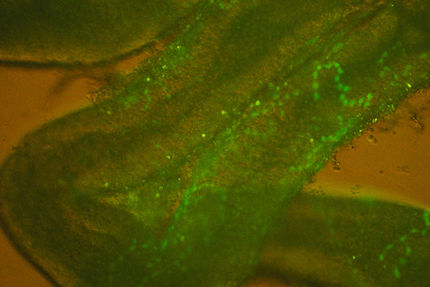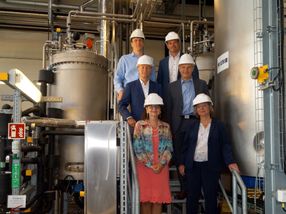Studies confirm proof-of-principle for Geron's Human Embryonic Stem Cell (HESC) derived hepatocytes
Advertisement
Geron Corporation announced that it has developed standardized hepatocytes from human embryonic stem cells (hESCs) that can model human hepatic drug metabolism.
Published in Cloning and Stem Cells (Vol. 9, No. 1, 51-62), a paper written by Geron's scientific collaborators at the Roslin Institute describes an improved procedure to differentiate hepatocytes that exhibit characteristic hepatocyte morphology and express several hepatocyte markers, including albumin and HepPar1. The hESC-derived hepatocytes also possess functional activities, including p450 metabolism, albumin production, glycogen storage and uptake and excretion of indocyanine green, that are characteristic of normal human liver function.
According to the company, Geron's hESC-derived hepatocyte technology presents a unique opportunity to address the bottleneck in drug discovery by providing standardized human hepatocytes that are predictive of human metabolism and toxicology. Undifferentiated hESCs maintain pluripotency and stable karyotypes after years in culture, providing a limitless supply of uniform source material. Geron has issued patents covering hepatocyte cells differentiated from hESCs and methods of drug screening using hepatocyte cells differentiated from hESCs.
The lack of human hepatocytes for in vitro assays is a fundamental bottleneck in pharmaceutical drug development. Primary human hepatocytes sourced from cadavers or liver resections have traditionally been used for drug metabolism and hepatotoxicity studies. However, the function, age and availability of these cells vary widely because of differences among the sourced donors.
Additionally, because hepatocyte function cannot be sustained in culture for more than a few days, the availability of primary hepatocytes is dependent on repetitive sourcing, creating supply constraints and further contributing to assay variability. Pharmaceutical companies have had to rely on animal models for preclinical metabolism and toxicity testing, which are often not predictive for man. The expensive and low-throughput nature of animal models has forced such testing to be reserved for compounds in late preclinical development, requiring pharmaceutical companies to invest significant resources in compounds before their metabolism and toxicity profiles are known, which contributes to both high development costs and costly failures of compounds in late preclinical testing.
Through its collaboration with the University of Edinburgh, Geron Bio-Med, Geron's U.K.-based subsidiary, is sponsoring two development programs: one to develop hESC-derived hepatocytes for application as a tool for predictive toxicology and as a treatment for liver failure, and another to develop hESC-derived bone and cartilage cell types for musculoskeletal diseases including osteoarthritis and osteoporosis.


























































